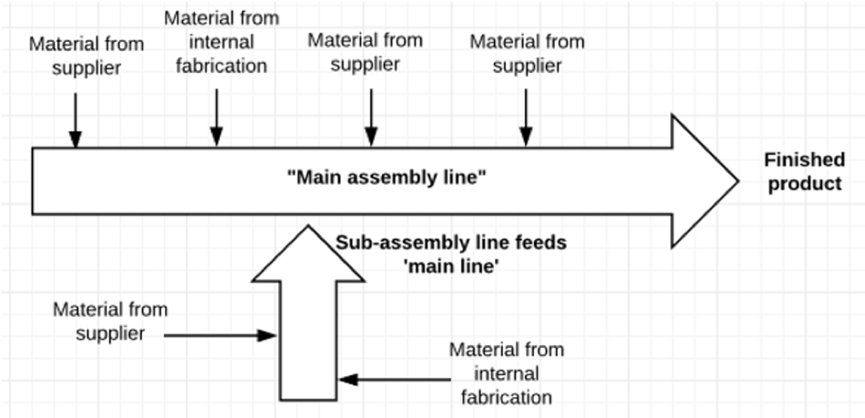Do your customers ask for shorter production cycles to allow them to replenish their inventory faster? Do you want to manufacture Just-In-Time? That’s something lean manufacturing consulting firms are often asked to do, and here are some common implementations.
1. A Flexible Manufacturing System for A Consumer Goods Manufacturer

Let’s look at one factory CMC worked with that struggled with inventory control. Some components and semi-finished goods stayed in the warehouse and parts of the workshop for many months, sometimes several years. Excessive inventory was a significant impediment to flexible manufacturing.
To circumvent this, we helped the factory set up a part tracking system. Every part was marked with a unique address and was easy to find in the computer system. This way, it became possible to see what proportion of ‘aged inventory’ was in the warehouse.
The next step was to force re-use of the old inventory when appropriate. This along with a few other measures, the factory reduced inventory by 50% in just a few months.
Another way we helped this company implement flexible manufacturing was through the use of a planning system. Although they already had an ERP, they didn’t use the production planning module.
One key objective of the production planning system we helped them put in place was the ability to make multiple changes on the lines in a quick fashion. On any given day, they were able to switch several times from one SKU to another.
This was a crucial approach to reduce the bad habit of batch and queue processing.
2. Eliminating Bottlenecks with Flexible Productions for an Automobile Manufacturer
This factory was accumulating a growing amount of work-in-process inventory because of two bottlenecks. The capacity of their entire system was constrained, causing severe shipment delays. They couldn’t even deliver what their customers ordered!

We helped them identify the cause of their lack of ‘flow’, and they got to work on increasing the capacity of the two bottlenecks.
Another issue was a disconnected flow of materials. We helped them connect sub-assemblies to the main assembly line.

We also helped them integrate assembly, testing, inspection, and packaging in one uninterrupted line.

You can read more about this in our case study here.
3. Introducing Flexible Manufacturing Systems to An Equipment Factory
Just like in the two facilities, we started by reducing inventory. Not only did it cost a lot of money, but it made the manufacturing flow slower and more rigid.
The ‘traditional’ workflow looked like this:
- The supplier delivers to a central warehouse, in quantities that were often too large.
- The central warehouse had to bring the parts to a workshop to cut just what was needed.
- Bring them to the workshop when they have to be assembled.
- The remainder was brought back to the warehouse and kept, often for years.
We helped this company negotiate new agreements with the suppliers of a few key components to establish a more straightforward workflow:
- The supplier cuts just what is needed (the orders are smaller, in exchange for a slightly higher unit price).
- The supplier delivers directly to the workshop when the parts will have to be assembled.
- Those parts are stored at POU (point of use) inside the workshop only for a few days until they are used.
As you can see, we often have to adapt to very different situations and develop countermeasures that make sense for each factory. Implementing a flexible manufacturing system does not always follow a linear sequence.
Have you implemented the same types of changes in a manufacturing facility? Any tips on what worked and what didn’t? Leave a comment below!





